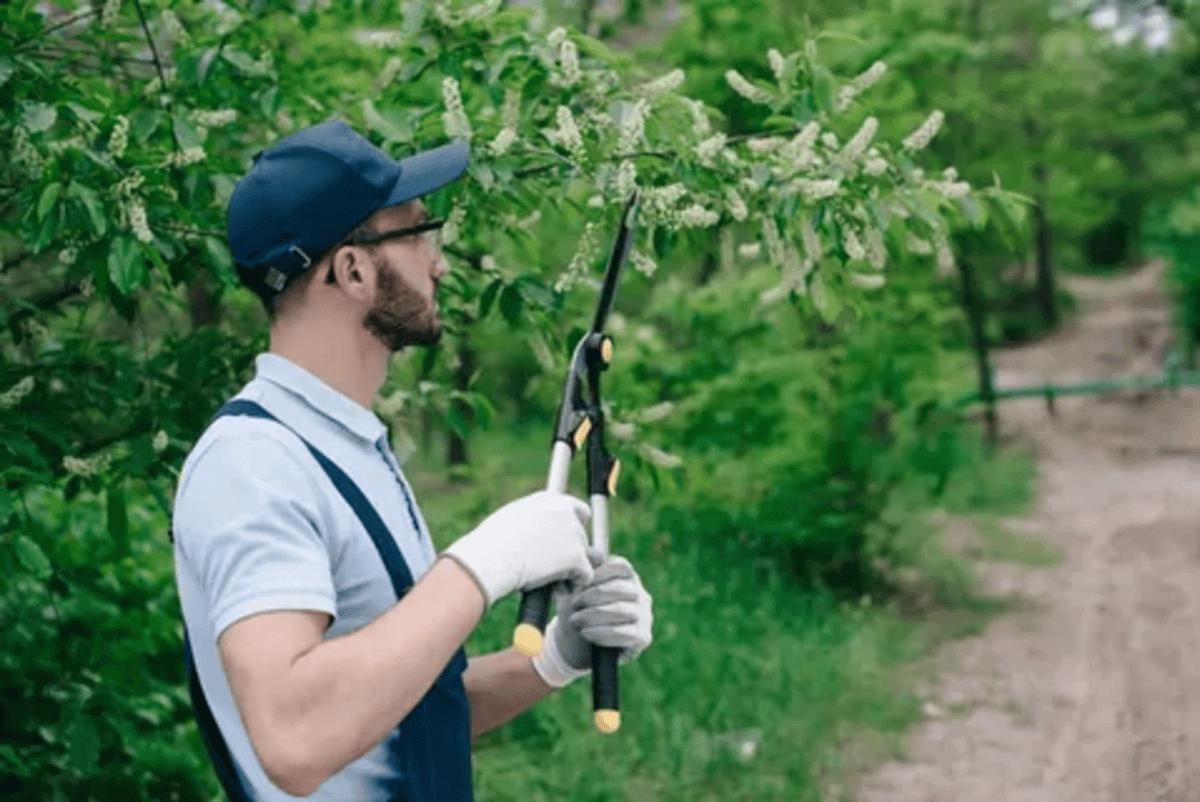Maintaining the health and appearance of trees is an essential part of landscaping. One of the most important tasks in tree
care is trimming or pruning. But to do this correctly, timing is everything. Knowing when to trim your trees not only helps them thrive but also prevents potential damage and diseases. So, when exactly is the best time to trim your trees? Let’s break it down by season and tree type.
Why Tree Trimming Matters
Before diving into the best timing, let’s first understand why tree trimming is so important. Proper tree trimming has numerous benefits:
Promotes healthy growth: Removing dead or diseased branches encourages healthier growth and helps the tree develop a strong structure.
Prevents hazards: Overgrown branches can pose risks, especially near power lines, homes, or sidewalks. Trimming reduces the chances of branches falling and causing injury or damage.
Enhances appearance: Regular trimming helps maintain the aesthetic appeal of your yard by shaping trees and keeping them in proportion with their surroundings.
Improves air circulation: Proper pruning allows air and sunlight to penetrate the tree’s canopy, reducing the risk of disease and pests.
However, for tree trimming to be effective, it must be done at the right time. Pruning trees at the wrong time can lead to unnecessary stress and harm.
The Best Time to Trim Trees
While trimming can be done throughout the year, there are optimal times for pruning based on the type of tree and the season. In general, late winter to early spring is considered the best time for most trees. During this period, trees are dormant, which means they are less likely to suffer from pruning wounds, and diseases are less likely to spread.
Winter (Late Dormancy Period)
Winter is the ideal season for most tree trimming. In this period, trees enter dormancy, halting their active growth. This resting phase minimizes the risk of sap loss and stress on the tree, as well as the potential spread of disease.
Advantages of winter tree trimming include:
Clear branch structure: Without leaves, the tree’s framework is clearly visible, making it easier to identify which branches should be trimmed.
Prevention of disease spread: Many pests and diseases are dormant during the winter, reducing the risk of infecting the tree through pruning cuts.
Encouragement of spring growth: Trimming during late winter allows the tree to focus its energy on new growth when spring arrives.
Which trees should you prune in winter?
Deciduous trees: These trees lose their leaves in the fall and go dormant in winter, making this the best time to prune them.
Fruit trees: Pruning fruit trees in late winter promotes better growth and yields in the upcoming growing season.
Spring (Early Growth Period)
Spring can be a good time for tree trimming, but it should be done with care. During early spring, trees start budding and growing new leaves. This is a period of intense growth, and pruning can help shape the tree for the season.
However, spring pruning has its risks:
Increased sap flow: Pruning too early in the spring can cause excessive sap flow, which isn’t harmful but can be messy.
Slower wound healing: Trees are using most of their energy for growth, so their ability to heal pruning wounds may be reduced.
Increased disease risk: Certain diseases, such as fire blight, can spread more easily during the spring season.
For the best results, trim lightly during this time, focusing on removing dead, damaged, or crossing branches.
Which trees benefit from light pruning in spring?
Flowering trees: Prune these right after they bloom to avoid cutting off next year’s flowers.
Evergreens: These trees benefit from early spring trimming, as it stimulates new growth.
Summer (Active Growth Period)
Summer isn’t the most common time for tree trimming, but it does have its advantages, particularly for correcting overgrowth or damaged branches. Trimming in summer can help reduce the tree’s size, promote better air circulation, and prevent damage from heavy branches.
Why summer trimming works:
Control growth: If you want to slow the
growth of a tree or keep its size in check, pruning in mid-summer can achieve this.
Targeting problem areas: Summer trimming is excellent for identifying and removing diseased, damaged, or dead branches.
Minimizes heavy sap flow: By summer, most trees have finished their major growth spurt, so sap flow isn’t as intense.
However, avoid heavy pruning in the summer, as it can stress the tree during the hot months.
Trees to prune in summer:
Fruit trees: After the fruiting season, light summer pruning can help shape the tree for next year’s growth.
Shade trees: Large trees that provide shade can benefit from minor trimming to reduce the risk of branches breaking during summer storms.
Fall (Prepare for Dormancy)
Fall is typically not recommended for tree trimming. During this season, trees are preparing for dormancy, and pruning can interfere with this natural process. Fall trimming also creates wounds that can be slow to heal, increasing the risk of disease or pest infestation. The cooling temperatures and increased moisture make it easier for fungi to infect freshly cut branches.
That said, emergency pruning such as removing dead, broken, or diseased branches—can be done in the fall. Otherwise, it’s best to wait until late winter for major pruning tasks.
Avoid trimming in fall for these trees:
Maples: These trees are prone to bleeding sap if pruned too late in the season.
Birch trees: Like maples, birch trees should not be pruned in the fall due to sap bleeding.
Special Considerations Based on Tree Type
While general seasonal guidelines work for most trees, some species have specific pruning needs:
Oak trees: These trees should only be pruned in the winter to avoid oak wilt, a deadly fungal disease.
Pine trees: It’s best to prune pines in early summer, as they are more resistant to pest infestations during this time.
Conclusion: Timing Is Everything
The best time to trim your trees depends on several factors, including the tree species and the season. While winter is generally the best time for most trees, always consider your specific tree type and the goals of pruning. By following the seasonal guidelines, you’ll promote healthy growth, enhance the
appearance of your landscape, and ensure your trees remain safe and sturdy for years to come.






